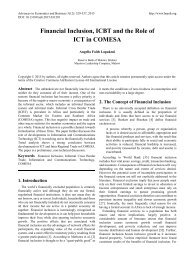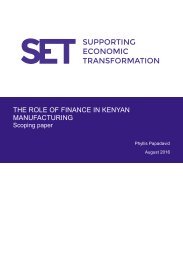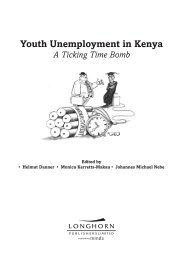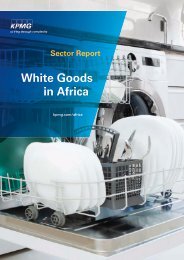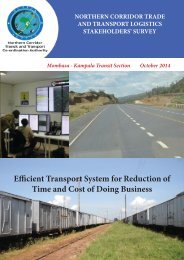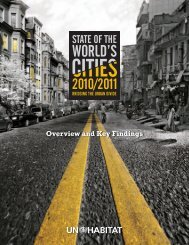FD
gvti301SEaf
gvti301SEaf
You also want an ePaper? Increase the reach of your titles
YUMPU automatically turns print PDFs into web optimized ePapers that Google loves.
Anriano, 4/15/16<br />
At the end of their life, paper bills are usually<br />
shredded and relegated to a landfill. But polymer<br />
notes taken out of circulation are shredded, converted<br />
into pellets, and used to make everyday<br />
plastic items such as lawn furniture.<br />
The Bank of England spent three years studying<br />
the potential effect of a switch from cotton<br />
and linen paper notes and concluded as well that<br />
plastic was the way to go. A polymer £5 note<br />
featuring Sir Winston Churchill will launch in<br />
September 2016, followed by a £10 Jane Austen<br />
note in late 2017 and a £20 note by 2020.<br />
On announcement of the U.K. move, Bank<br />
of England Governor Mark Carney said, “The<br />
quality of polymer notes is higher, they are<br />
more secure from counterfeiting, and they can<br />
be produced at lower cost to the taxpayer and<br />
the environment.”<br />
Canadian polymer bills: Canada released the $100 note in November 2011, the $50 in March<br />
2012, the $20 in November 2012, and the $10 and $5 bills in November 2013.<br />
In all categories and phases, polymer outperformed<br />
paper. For example, the study found, a polymer bill promises<br />
a 32 percent reduction in global warming potential<br />
and 30 percent reduction in primary energy demand compared<br />
with paper. Most important, polymer notes last more<br />
than twice as long as paper notes—and higher denominations,<br />
which are handled less frequently, last even longer.<br />
This means fewer polymer notes have to be manufactured<br />
and distributed over the life of a series. And polymer notes<br />
weigh less than paper ones, so even their transportation and<br />
distribution are easier on the environment.<br />
Mixed reactions<br />
Ordinary users have mixed reactions to the bills’<br />
plasticky feel. Zoë Martin, a tutor in Toronto,<br />
Canada, says, “They stick to each other because<br />
of static cling, they don’t fold up nicely like paper<br />
bills when they’re new, and they’re slippery<br />
so they slide out of your pocket.” But Michael<br />
Brienza, a Toronto day care teacher, says, “I prefer<br />
them; they’re so much cleaner. The paper bills got<br />
all grimy.” And Peter Cecil Sinnott, a data science<br />
graduate of Montreal’s McGill University, says, “The fact that<br />
they’re waterproof means getting them wet isn’t going to cost<br />
you. True story: my sister once found one of the new Canadian<br />
$100 bills while snorkeling in the tropics. Who knows<br />
how long it was sitting on that reef?”<br />
To paraphrase Mr. McGuire’s advice to Benjamin in the<br />
movie The Graduate, whether people like it or not, “the<br />
future is plastic.” ■<br />
Ping Wang is a Communications Officer in the IMF’s<br />
Communications Department.<br />
Environmentally costly<br />
The life cycle—production,<br />
transportation, and eventual<br />
disposal—of the 3 billion<br />
paper euro banknotes<br />
produced in 2003 alone<br />
has the environmental effect<br />
of driving a car around the<br />
globe 9,235 times<br />
Environmental impact of<br />
3 billion paper euro banknotes<br />
=<br />
Environmental impact of driving<br />
around the earth 9,235 times<br />
Finance & Development June 2016 43




